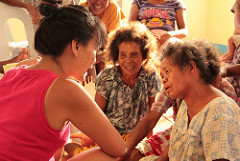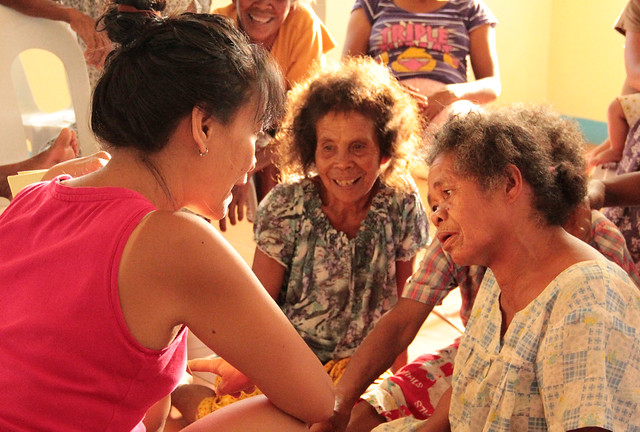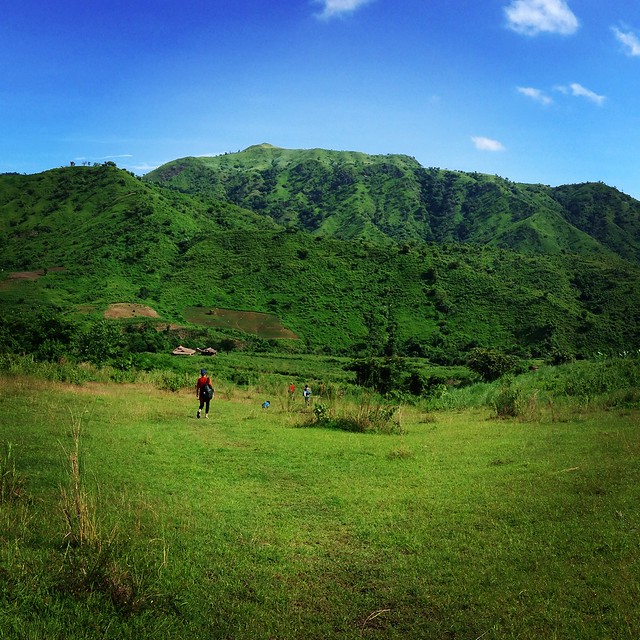In 2014, NTFP-EP conducted a study on the dietary patterns along with their use of traditional recipes using ingredients that can be gathered from their forests, conducting health checks along the way. As we gathered information on vital signs, we also listened to conflicting stories of vivaciousness and dearth in an interwoven narration of stories during our meanwhile immersion.
The Negrito peoples in the Philippines are short, dark and curly-haired. Among these groups are the Aeta people were initially semi-nomadic, often found practicing traditional shifting cultivation around Mt. Pinatubo before it erupted. Today, however, many of these communities have settled in sitios denuded by the Pinatubo eruption in the early 90’s, if not begging along the streets of nearby populated cities.
They have found new homelands after being displaced by Mt. Pinatubo after an unfavorable two-year stay in evacuation centers eating instant noodles almost every day. With their forests badly burned down by the eruption, the Aeta had to start with nothing but ash and parched land upon their return. They tried to make do with what they can, but the circumstances have not been to their favor.
In the early 2000s, the government declared a significant portion of their ancestral domain under army control for their practice and armory training. Currently, hectares of these presumed militarized lands have been fenced and converted to grazing areas for cows and goats owned by landlords while small patches of barren forestlands have been left out for the Aeta to cultivate.
As a means of livelihood, Aeta adults, and at times including the children, preoccupied themselves with harvesting banana flowers not for their own subsistence, but for their monetary needs: a huge sack of banana flower for one cup of uncooked rice. This problematic multilayered situation has swept the community of their position to bargain, subjecting themselves to the mercy of abusive middlemen and landlords that have occupied the land which used to be theirs.
As we walked from one sitio to another to visit the Aeta villagers, we often waited for the community members to gather. Men would often arrive early, apologizing for how they and their wives have just returned from harvesting banana flowers. In a few minutes, the women would arrive exclaiming how they’ve just finished boiling sweet potatoes or cooking rice for their family lunch after coming from the harvest.
In our visit to the Aeta community, we interviewed Shiela who was pregnant and brought along her two sons: one was two years old and the other was 14 months old at that time. She looked pale and sickly as both kids suckled on her simultaneously.
We wanted to talk to her husband but she said he was away so we resorted to asking if the tribal leader could talk to the husband – only to find out that her husband was the tribal leader.
Shiela was among the wives we sat down with one afternoon after our long walk from the other sitio. It was inside a small chapel that can be emptied to double up as room accommodation whenever they have visitors from the city.
As we all sat on the floor, we began asking them about the relational dynamics between husbands and wives. The Aeta women did not have any hesitations sharing intimate information. They even humored us with demonstrations and re-enactments, filling the room with infectious giggles and laughter.
However, when asked about who decides when to have sex, all except one woman said in chorus: “my husband”. Everyone, including the elders and the young mothers, spoke of the situation with honest casualness as if it was out of this world to say no whenever their husbands demand it.
After the elders have spoken about this, Shiela, who was at that time nursing one of her babies, told us that she wish she could just say no. All the women looked at her from the side of their eyes. With little to no rest in between pregnancies, Shiela said her pregnancy is becoming more and more difficult for her.
In the legs of our village assessments, we met more and more of the likes of Shiela: young girls becoming mothers before they reach the age of 20 and getting pregnant one child after the other until the age of mid 30s to 40, with many of them taking care of 5-6 children that are spaced from 11 months to 2 years.
It was common for the women in the village to think they are to attend to their husband’s every sexual need regardless of their willingness to do so. It was apparently common thought among women that they can only be pregnant if they enjoy and feel pleasure while having intercourse. This story is becoming all too familiar. With women from indigenous communities accepting their fate as recipients of the shorter end of the stick. After living with it for some time, they’ve come to perceive of the imbalance as their realities.
Part of our immersion with the communities was to conduct first aid and reproductive health workshop on the traditional healers and hilots of the communities. They were taught of the basic medical concepts that may help them provide immediate assistance to accidents and other physical stress in the absence of health practitioners.
After the workshop, the women felt empowered especially when they were made aware of their roles as mothers and as decision makers in the family too. More than the skills and knowledge we shared to the women, perhaps more crucial was their realization of their roles as decision-makers too, not just in procreation, but also in productivity.
It should be noted though, that changing self-perception among women and swaying the consciousness among men of communities shall take time and unlearn the imbalances we’ve all learned to live with and accept as normal.
Furthermore, this is but a few of the many dimensions of driving for a gender-balanced world. This International Women’s Day is a reminder of the call for collective action and shared responsibility we all share in accelerating gender balance.
*Shiela’s name changed
Story and photos by Earl Diaz, NTFP-EP Asia






